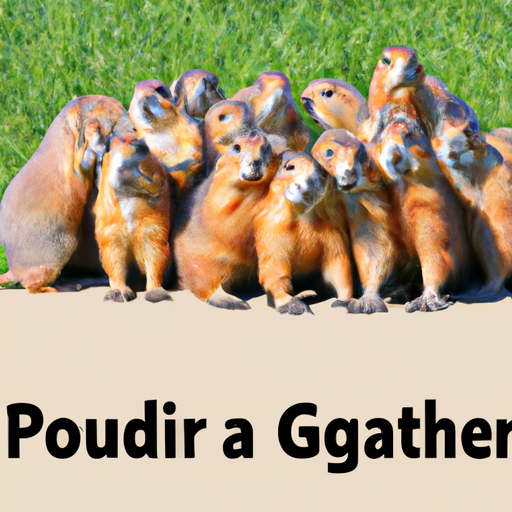Introduction
Imagine you are walking through the grasslands of North America. You spot some small, burrowing creatures scampering about, chattering away. These are prairie dogs, but they’re not alone. They’re part of a bigger group. You might be wondering, what is a group of prairie dogs called?
Well, you’re in the right place to find out. This guide will delve deep into the social structure of prairie dogs, their unique language, and of course, the term used to describe a group of these fascinating creatures.
A Group of Prairie Dogs: The Coterie
The term for a group of prairie dogs is a coterie. This term might seem unusual, as it’s often associated with a close-knit group of friends or associates. However, it’s a fitting term for these social animals. A coterie typically consists of one male, several females, and their offspring.
But a coterie is not just about family ties. It’s also about cooperation and protection. Prairie dogs live in large colonies, or towns, comprised of several coteries. They cooperate to maintain the colony’s burrow system and stay vigilant against predators.
Here’s a quick breakdown of a typical prairie dog coterie:
| Member of Coterie | Number |
|---|---|
| Male | 1 |
| Females | 2-4 |
| Offspring | Varies |
The Social Structure of Prairie Dogs
Prairie dogs have a complex and fascinating social structure. The coterie forms the basis of this structure. Here’s how it works:
-
The Dominant Male: The dominant male is the head of the coterie. He’s responsible for defending the territory and keeping predators at bay.
-
The Females: The females are responsible for raising the young and maintaining the burrows.
-
The Offspring: The offspring stay with the coterie until they become adults. After reaching adulthood, males usually leave to join or form other coteries.
In addition to the coterie, prairie dogs have a broader social structure known as a clan. A clan consists of several coteries that share a common territory.
The Language of Prairie Dogs
Believe it or not, prairie dogs have one of the most sophisticated animal languages. They communicate using a series of chirps and squeals, which can convey specific information about predators. For example, they have different sounds for airborne versus ground predators.
This advanced communication system plays a vital role in the survival of the coterie and the broader prairie dog colony. It’s a testament to the complexity and sophistication of these creatures.
The Importance of Conservation
Prairie dogs play an essential role in their ecosystems. They’re a food source for many predators, and their burrowing activity benefits other animals and plants. However, they’re under threat from habitat loss and disease.
As a caregiver for the natural world, it’s crucial to understand the importance of preserving these creatures and their habitats. You can help by supporting conservation efforts and spreading awareness about prairie dogs and other threatened species.
Frequently Asked Questions
-
What predators do prairie dogs have?
Prairie dogs have many predators, including coyotes, eagles, badgers, and snakes. -
How long do prairie dogs live?
In the wild, prairie dogs typically live 3-4 years. In captivity, they can live up to 8 years. -
How big do prairie dogs get?
Prairie dogs typically weigh between 1-3 lbs and are 12-16 inches long. -
How can we help protect prairie dogs?
Supporting conservation organizations, spreading awareness about prairie dogs, and advocating for their protection can all help ensure their survival. -
What is a prairie dog town?
A prairie dog town is a large colony of prairie dogs that can span several acres and include thousands of individuals.
In conclusion, understanding the social structure and language of prairie dogs can help us appreciate these creatures and the role they play in their ecosystem. So, the next time someone asks you, “What is a group of prairie dogs called?” you can confidently answer, “A coterie!” and share your knowledge about these fascinating animals.



